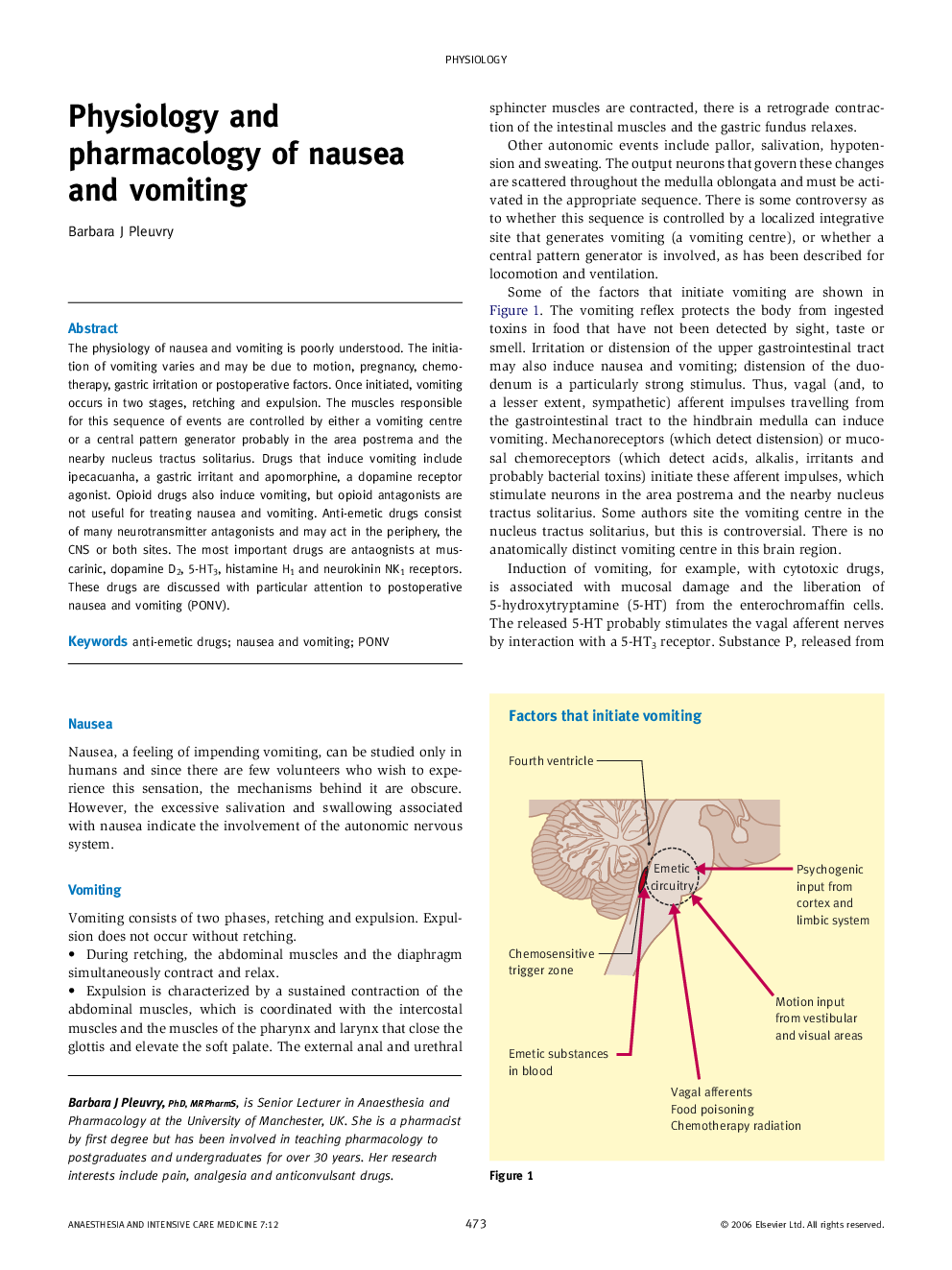| کد مقاله | کد نشریه | سال انتشار | مقاله انگلیسی | نسخه تمام متن |
|---|---|---|---|---|
| 2743767 | 1148700 | 2006 | 5 صفحه PDF | دانلود رایگان |

The physiology of nausea and vomiting is poorly understood. The initiation of vomiting varies and may be due to motion, pregnancy, chemotherapy, gastric irritation or postoperative factors. Once initiated, vomiting occurs in two stages, retching and expulsion. The muscles responsible for this sequence of events are controlled by either a vomiting centre or a central pattern generator probably in the area postrema and the nearby nucleus tractus solitarius. Drugs that induce vomiting include ipecacuanha, a gastric irritant and apomorphine, a dopamine receptor agonist. Opioid drugs also induce vomiting, but opioid antagonists are not useful for treating nausea and vomiting. Anti-emetic drugs consist of many neurotransmitter antagonists and may act in the periphery, the CNS or both sites. The most important drugs are antaognists at muscarinic, dopamine D2, 5-HT3, histamine H1 and neurokinin NK1 receptors. These drugs are discussed with particular attention to postoperative nausea and vomiting (PONV).
Journal: Anaesthesia & Intensive Care Medicine - Volume 7, Issue 12, December 2006, Pages 473–477